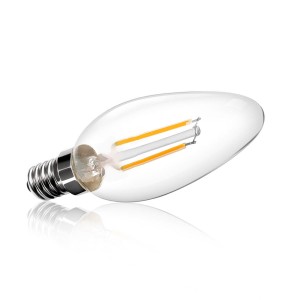Beat Rising Electricity Prices With Energy Efficient LEDs
Posted by Amit Soni on 14th Sep 2015
 Are you feeling the pinch from the increased cost of household utility bills over the past few years?
Are you feeling the pinch from the increased cost of household utility bills over the past few years?
If so, don’t despair, because a solution has presented itself!
Figures released in 2012 by Ofgem (The Office of Gas and Electricity Markets) painted a grim picture of just how much average bill prices had increased in the preceding 5 years, despite the big energy companies announcing unprecedented profits. They showed that, in early 2008, the average household fuel bill was £885, rising a staggering 65% to £1,345 by January 2012.
With the economic outlook still looking fairly bleak, the impact of increasing fuel bills cannot be overstated. Indeed, it’s estimated that up to 5.5 million households in the UK are currently experiencing “fuel poverty”.
It’s not all bad news, however. Despite no significant price drops being expected in the near future, there are a couple of ways in which you’ll be able to combat the problem of spiralling energy prices.
The first way that you can fight back is to ensure that you’re getting the best possible deal on your household energy bill. You can do this by using a price comparison website in order to compare energy suppliers.
Switch To LED Lighting
The second, and an increasingly popular and common-sense method of cutting down on your household energy expenditure, is to switch to LED lighting throughout your home.
LED lights and bulbs represent an incredibly cost-effective way to illuminate your home for several reasons.
The first of which is their energy-efficiency when compared to both the incandescent and fluorescent bulbs you may currently be using.
Heat Is A Wasteful By-Product Of Some Methods Of Light-Production.
Traditional bulbs such as these lose an unbelievable amount of electricity in the production of heat. This has to do with the way that incandescent bulbs especially generate their light - heating a filament until it glows white-hot is not the most efficient way to produce light, it would appear.
LED bulbs work in a completely different way; a way that produces very little heat, leaving the majority of their power to do its job of generating light.
Energy Saving
This reduces the amount you’re spending on your electricity bills, as the following example will illustrate:
By replacing 5 x 35 watt traditional Incandescent Bulbs in your home with 5 of the pictured Dimmable E14, 3 watt Omni-LED Clear Candle Bulbs, assuming an electricity cost of 9.806 pence per kW/h (Kilowatts per hour) and working 8 hours a day for 365 days, you’ll achieve the following savings –
- 5 x 35 watt traditional Incandescent Bulbs will use 511.00 kW/h and cost £50.11 to run for one year.
- 5 x Dimmable E14, 3 watt Omni-LED Clear Candle Bulbs will use 43.80 kW/h and cost £4.30 to run for a year.
Therefore, the saving you’ll make is £45.81.
Increased Longevity
The massively increased longevity of LED bulbs will also enable you to save a considerable amount of money when you use them to replace your existing light sources. Yes, with an average life-expectancy of more than 50,000 hours, LEDs will significantly outlast incandescent bulbs with their 1,200 hour life-span and CFLs (Compact Fluorescent Lamps) with 8000 hours.
This means that, for every LED bulb you would need 6.25 CFLs and 41.6 incandescents!
Thus, the incredible savings you’ll make over the lifetime of your LED light bulbs should go at least some of the way towards enabling you to stave off the difficulties that rising energy prices may be causing.
Should you require any assistance or advice about which LED lighting products will be best for you and your home, please don’t hesitate to contact one of our customer service advisors on 0116 321 4120, or send an e-mail enquiry to cs@wled.co.uk.
You can also see our full range of LED light bulbs products on our online store website.





